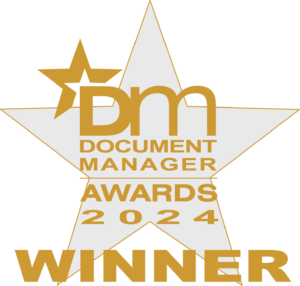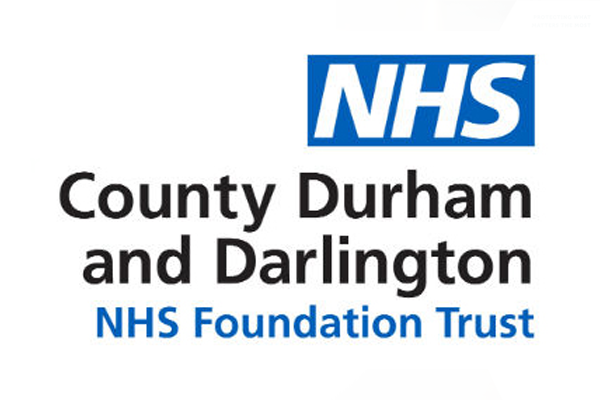Working with Leeds and Yorkshire Partnership NHS Foundation (LYPFT)

Leeds and York Partnership NHS Foundation Trust (LYPFT) needed off-site storage to reclaim space taken up by patient records, as well as tackling a bigger ambition: to become the UK’s first mental health trust to digitise all its patient records.
Which is why it decided to work with Restore.
The customer
In January 2008, Leeds and York Partnership NHS Foundation Trust (LYPFT) found itself drowning in paper. The Trust offers mental health services from ~ 40 sites to the people of Leeds, York, Yorkshire and Northern England, providing support to over 811,000 people. With the larger nature of mental health records, the Trust was generating and storing a lot of paper.
But the Trust didn’t just need that paper storing. It wanted to provide better patient care to the people it was helping. So, on top of secure off-site storage, the Trust wanted to go digital, and whilst ultimately this was an ambition to be ‘paper-lite’, not ‘paper-free’, the Trust’s aim was to deliver the NHS vision of paper-free care at the point of delivery, with an Electronic Patient Record (EPR) and an Electronic Document Management System (EDMS) working seamlessly together to provide a fully electronic patient record
It was the first Mental Health Trust in the UK to do so. There was no playbook to follow. So they turned to Restore to help create it.

The first thing the Trust needed to do was free up space in its 40+ sites. The Trust had 22,139 boxes of patient records, containing 392,406 patient files in offsite storage with Restore, and large quantities of patient record volumes and loose, unfiled documentation all taking up valuable space at its operational locations. Each site wanted different things from the space, from using it to see more patients to using it to bring in more staff.
The wider challenge was even more ambitious: to have a digital file for every existing active and new patient. This meant scanning over 3 million pages of patient records!
The Trust procured an Electronic Document Management System: MediViewer. So it didn’t need an all-in-one service. Instead, it needed a digitisation partner that could work with its existing stakeholders while still providing a smooth, seamless service. After all, LYPFT was doing something entirely untried before. The last thing it needed was a fractious relationship between its suppliers!
The Trust was also very aware that it needed the digitisation project to adhere to strict accreditations. It needed a partner that could keep it compliant with the most rigorous of regulatory requirements thanks to a plethora of accreditations such as BSI 10008 (Electronic Information Management System Requirements), the NHS Data Security and Protection Toolkit (DSPT), and NHS Clinical Information Standard DCB0129.

Step one – storage
The solution began with the easiest challenge to tackle: the off-site storage.
This is something Restore has been doing for over 30 years, so we’re a dab hand at it. We already held 22,139 boxes of LYPFT patient records in our local secure storage facility.
Each of the 392,406 patient files were catalogued and indexed so anyone from the Trust could easily find and request the right record for delivery. The Trust requested that we create an exceptional 4-hour delivery service for when a record was needed urgently, so we built out the processes and infrastructure needed to make sure we could provide that.
And, because mental health records have to be retained for 20 years after a patient has been discharged (or 10 years post-death), the Trust wanted to be sure the files would be perfectly preserved. Which is why all our facilities enjoy state-of-the-art temperature and humidity controls to keep all the records in our care as fresh as a daisy.
We took on the Trust’s records in January 2008, and we’ve been keeping them safe ever since.
Step two – digitisation
“The internal logistics were already in place. We already had the proven logistical service with Restore, which has never skipped a beat.”
Carl Starbuck, Head of Information Governance / Data Protection Officer for LYPFT
Having enjoyed 15 years of stellar service, the Trust turned to Restore for more of the same for its digitisation project. We’ve worked with a number of NHS Trusts on digitisation projects, so we were ready to apply what we’d learnt to this new challenge.
We spent a year understanding the Trust’s needs, working on processes, and liaising with the MediViewer team to make sure our data capture would mesh seamlessly with their system.
Some of the files the Trust wanted scanned were already in our storage facilities. Our barcoding tracking systems meant the Trust could see exactly where each record was as they moved from storage to scanning and onwards to secure destruction – maintaining the essential ‘chain of custody’ with a robust audit trail following the record through its journey.
Of course, the Trust had plenty of files for us to scan which weren’t already in storage, so we collated them before starting the digitisation process. One of the things the Trust wanted was for us to digitally prepare the records before scanning. That involved capturing certain data points for each file to make it easier for the Trust to find exactly the file it needed, when it needed it.
Unfortunately, things went a little wrong at this point.
Encountering (and solving) problems
When we began scanning records, we hadn’t understood the significance of the file folder volume numbers. It had been thought the dates on the documents were sufficient to help clinicians find what they were looking for, and we agreed. But those clinicians started telling us that the volume numbers were hugely meaningful. Mental Health records are in many ways a story of the patient’s life, and those stories have, in the most complex cases, a number of volumes making up the complete set, with the volume numbers essential in chronologically ordering the patient history.
Every project has stumbling blocks, but it’s how you handle them when they crop up. Rather than devolving into blame and finger-pointing, we immediately made sure new scans included the volume number. Then we figured out a way to go back and manually add those volume numbers to the records we’d already scanned, and did it.
Problem solved.
Better access, better care
Something else that the Trust wanted was the ability to search a patient’s record from any location, 24/7.
Optical Character Recognition (OCR) is a service we’ve provided for many years, and it really came into its own in this project. Because mental health patient records can constitute many volumes of files and papers, finding out if they’ve ever been prescribed a certain drug or received a certain treatment approach can mean trawling through a lot of paper.
But OCR meant all those records were now searchable. A clinician can search for a key term and find it in seconds, saving time and frustration!
And, of course, the digital file can be accessed anywhere. A clinician doesn’t need to wait for a patient record to be transported across a city before they can deliver care; they have all the information they need straightaway – instantly, concurrently, whenever and wherever they work.

“The focus of this project was on the qualitative aspects of an electronic record. It’s better for patient care and safety. It’s better from a data protection perspective. You’re not moving the record around, it’s instantly and concurrently available. And it’s better in terms of providing quality health care.”
Carl Starbuck, Head of Information Governance / Data Protection Officer for LYPFT
We started scanning files in February 2023. By March 2024, the Trust considered itself fully digital: every active patient now had a digital file. In a year, our team had created 7 million images.
All of those images were entered into MediViewer, putting the records of 7,500 patients at the fingertips of clinicians across the entire Trust. Now the Trust has 24/7 access to those records, making it easier to deliver care and better protecting patient information.
And, of the 392,406 patient files in our secure storage facilities, 14,995 files were digitised, allowing us to reduce the Trust’s inventory by 631 boxes.
New patient records will be created electronically, but we’re continuing to scan older files as previously discharged patients return to need further care.
And we’ll keep those records safe and sound as long as the Trust needs them to be stored. And when the retention period ends, we’ll alert the Trust so it doesn’t store files it no longer needs.
"It can’t be understated, the sheer magnitude of what’s been achieved here. We are the first mental health trust that’s delivered a fully digitised record. It’s not happened before. There was no playbook for this. But I don’t recall losing sleep over it. Because we were working with people we trusted. We let Restore handle all the headaches. It was a big project with a lot of moving parts and a lot of partners. And the end result is excellent."
Carl Starbuck, Head of Information Governance / Data Protection Officer for LYPFT

We are pleased to share this project won Public Sector Project of the Year 2024 at the Document Management Awards
Whether you’re a mental health trust looking for the playbook we created with LYPFT, or you simply want to protect and better manage your patient records, Restore can help. Speak to a member of our helpful team today and we’ll put together a bespoke plan just for you.



